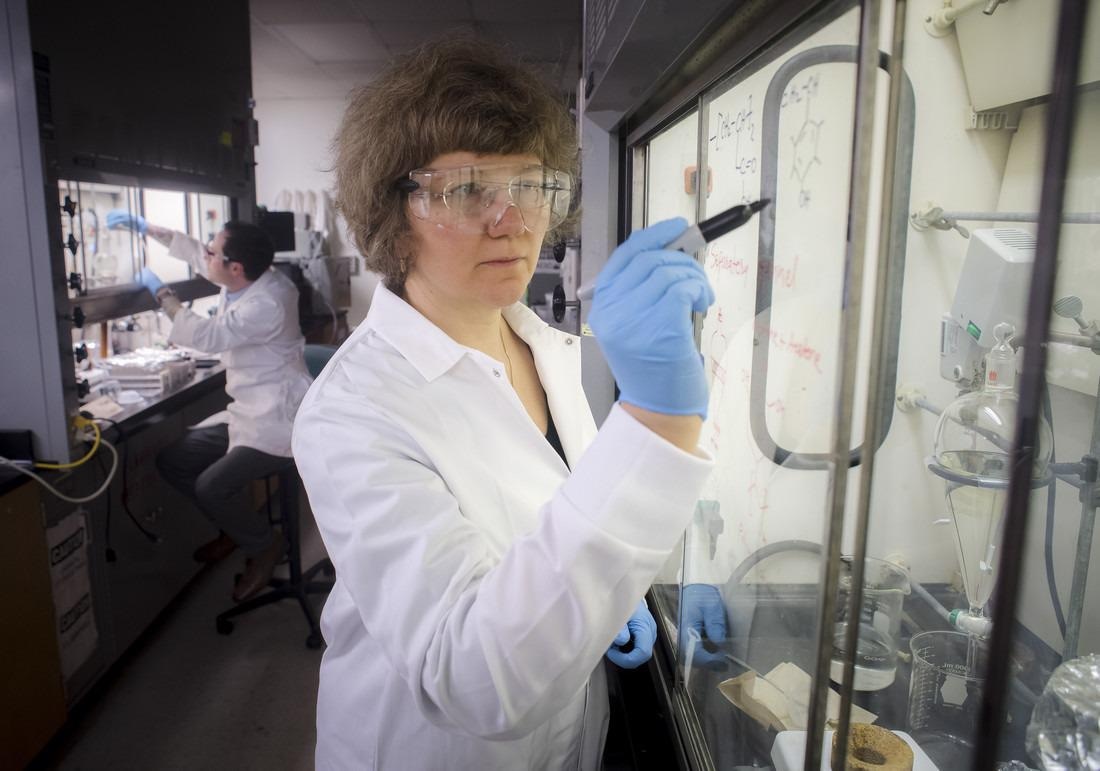Reviewed by Danielle Ellis, B.Sc.May 25 2022
Small interfering RNAs, or siRNAs, have the potential to cure tumors by targeting knocking down oncogenes that drive tumor development while avoiding the damage associated with chemotherapy. The siRNAs, on the other hand, require a vehicle to shield them from degradation and clearance while they travel through the bloodstream to the cancer tumor.
 Eugenia Kharlampieva, PhD. Image Credit: University of Alabama at Birmingham.
Eugenia Kharlampieva, PhD. Image Credit: University of Alabama at Birmingham.
The University of Alabama at Birmingham’s Eugenia Kharlampieva, PhD and Eddy Yang, MD, PhD, have shown that a 100-nanometer polymersome may safely and successfully deliver PARP1 siRNA to triple-negative breast cancer tumors in mice. The siRNA reduced the expression of the DNA repair enzyme PARP1 and, surprisingly, provided mice with breast cancer with a fourfold improvement in survival.
PARP inhibitors have been shown to be effective in targeting cancers with DNA repair defects, and they may influence the tumor-immune microenvironment. However, several PARP inhibitors have been difficult to combine with chemotherapy due to bone marrow suppression. Targeting PARP1 in the tumor might lead to new combinations of therapy.
Researchers published their findings in the journal ACS Applied Bio Materials, “To the best of our knowledge, our work represents the first example of biodegradable, non-ionic polymeric nanovesicles capable of efficiently encapsulating and delivering PARP1 siRNA to knock down PARP1 in vivo. Our study provides an advanced platform for developing precision-targeted therapeutic carriers, which could help develop effective drug delivery nanocarriers for breast cancer gene therapy.”
Polymeric nanovesicles made of three biodegradable block copolymers connected together in a straight chain are used to encapsulate and deliver PARP1 siRNA to breast cancer cells quickly and safely. The first block, a 14-molecule N-vinylpyrrolidone chain, is connected to the second block, a 47-molecule dimethylsiloxane chain, which is connected to the third block of another 14-molecule N-vinylpyrrolidone chain.
The UAB researchers employed simple ways to assemble these block polymers into hollow-sphere polymersomes with a shell thickness of roughly 13 nanometers and a diameter of 100 nanometers. Large-scale manufacturing and constant quality control are possible with this assembly process.
The RNA was loaded into the nanocarriers by polymersomes formed in the presence of one micromolar PARP1 siRNA. The siRNA was released unmodified when they were split open in vitro using ultrasound. The polymersomes may also be loaded with Cy5.5 fluorescent dye, which accumulated in tumors 18 hours after injection of the dye-laden nanocarriers into tumor-bearing mice through passive targeting.
HER2-positive, trastuzumab-resistant breast cancer cells in culture were evaluated using siRNA-loaded polymersomes. They lowered PARP1 protein levels in the cells, which restricted cell growth and repressed the NF-B transcription factor pathway, comparable to what PARP inhibitors did earlier.
Researchers were also able to covalently connect fluorescent dye to the exterior of these adaptable nanocapsules, and experts believe that targeting molecules may be added in the same way to help the polymersome settle in a tumor.
These non-ionic, biodegradable PVPON14–PDMS47–PVPON14 nanovesicles capable of the efficient encapsulation and delivery of PARP1 siRNA to successfully knock down PARP1 in vivo have strong potential to become an advanced platform for the development of precision-targeted therapeutic carriers. They could help in the development of highly effective drug delivery nanocarriers for breast cancer gene therapy.”
Eddy Yang, M.D, PhD, Professor, Department of Radiation Oncology, Marnix E. Heersink School of Medicine, University of Alabama at Birmingham
PVPON stands for poly(N-vinylpyrrolidone) and PDMS stands for poly(dimethylsiloxane). Despite the fact that the siRNAs carried by polymersomes are quite short (approximately 21 to 25 nucleotides), they can selectively block oncogene expression by degrading its messenger RNA.
Kharlampieva is a renowned professor at the UAB College of Arts and Sciences’ Department of Chemistry. Yang is a professor in UAB’s Marnix E. Heersink School of Medicine’s Department of Radiation Oncology and the ROAR Southeast Cancer Foundation Endowed Chair in Radiation Oncology. Both are O’Neal Comprehensive Cancer Center, senior experts.
Source:
Journal reference:
Yang, Y., et al. (2022) Poly(N-vinylpyrrolidone)-block-Poly(dimethylsiloxane)-block-Poly(N-vinylpyrrolidone) Triblock Copolymer Polymersomes for Delivery of PARP1 siRNA to Breast Cancers. ACS Applied Bio Materials. doi.org/10.1021/acsabm.2c00063.